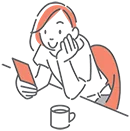|
Getting your Trinity Audio player ready...
|
***This article was written for the Sept./Oct. ’25 issue of Animation Magazine (No. 352), available soon.***
Following on the heels of January’s Your Friendly Neighborhood Spider-Man, the latest slice of Marvel animation moves from New York to a fictional African nation Eyes of Wakanda. Based on characters in the Black Panther comics and live-action films, the four-part anthology highlights stories from different corners and time periods of Wakanda — a vast, technologically advanced country that’s home to the Hatut Zeraze, a secret police force the series follows.
To helm the show, Marvel higher-ups Kevin Feige and Brad Winderbaum tapped Todd Harris, a talented story artist who has worked with the studio since 2017’s Thor: Ragnarok. “I originally pitched this project way back during the production of Avengers:] Infinity War (2018),” says Harris. “I pitched it to Kevin as a potential precursor to the Black Panther movie, but that was before the MCU was thinking about animation at all. When I moved over to Black Panther to help out, I pitched it to Ryan [Coogler] because I thought it was such a compelling idea, and I would’ve loved to see it get made, even if I wasn’t a part of it. In hindsight, it was probably pretty presumptuous, but fortunately for me, the pitch took root with Ryan, Kevin and Brad.”
![Eyes of Wakanda [Marvel Animation / Disney+]](https://www.beta.animationmagazine.net/wordpress/wp-content/uploads/Eyes-of-wakanda-2.jpg)
The Past Is Prologue
Harris’ history with the studio was key to his landing the role. “My experience with Marvel as a board artist was extremely helpful. Working so closely with the producers, directors and the crew let me see so many examples of how to play in the MCU’s amazing sandbox,” Harris says. “Those years working together really helped me grow into my leadership position. The greatest lesson I learned was for me to try to be the kind of director that I would like to work for.”
As Harris developed the idea, the show went through many iterations, but one concept helped it all come into focus. He recalls, “There were a lot of different ideas and suggestions, different framing devices. That’s how development is. But the core idea stayed the same and really helped anchor the project conceptually. Real history meets Wakandans, each interaction teaching you something new about Wakanda and maybe something new about our collective past. The institution of the Hatut Zeraze (War Dogs) is the real focus of the show. The individual agents help us unravel the mystery of their mission, their methods and how they evolve over hundreds of centuries.”
Other Marvel animated series like Your Friendly Neighborhood Spider-Man and What If …? have employed CG animation in different ways. Eyes of Wakanda fits with the trend of having its own visual identity, pairing painterly textures with more realistic-looking characters. “More than anything I wanted the show to feel as if it was handmade as much as it could,” explains Harris. “I took influences from the amazing American painter Ernie Barnes as well as early 20th century illustrator Dean Cornwell, with some energy from fine artist Charles Bibbs. In my head, those were the cross-sections that I was chasing. Our team really did an amazing job embodying the spirit of that work.”
Designing Epic History
All three artists’ influence is clear in the show. From Barnes’ ability to make it seem like people and items are blending into one massive monolith to Cornwell’s use of stark color combinations, the series’ inspirations shine through. Bibbs’ own style of drawing human faces is also evoked in the character designs on Eyes of Wakanda. Harris says, “Strong composition, depth and dramatic posing, are all just part of our creative DNA. We never consciously tried to adhere to any house look. Fortunately, at Marvel Animation we’re encouraged to find a voice for the type of story we’re telling. Hopefully that unique voice is reflected in the final result.”
This freedom that Marvel affords its creators means the series differ greatly in how they’re made. “In terms of Marvel’s animation pipeline, each show is its own universe, so the workflow varies from show to show,” says Harris. “The methodologies, technologies and artistry are all bespoke to each series. Ours was no different, juggling the need to innovate with the use of common practices in order to make a unique but producible show.”
“My experience with Marvel as a board artist was extremely helpful. Working so closely with the producers, directors and the crew let me see so many examples of how to play in the MCU’s amazing sandbox.”
— Director & EP Todd Harris
The 2018 Black Panther film marked a new age of representation in mainstream cinema with its close attention to cultural authenticity. Picking up on that legacy provided challenges and joy for Harris. “Black Panther was a watershed moment,” he says. “The conception of Eyes of Wakanda was to prop up the mantle of the Black Panther by seeing how incredible Wakandans are. Our creative challenge wasn’t trying to find the authenticity. The challenge was restraining our collective excitement. The entire crew is full of die-hard fans, from the writers’ room to the revisionist crew. There’s so much passion and dedication for the subject matter, authenticity was almost a foregone conclusion. I, myself, and the whole crew felt honored to be able to make this.”
Eyes of Wakanda premieres on Disney+ on Friday, August 1. The four-episode season is exec produced by Ryan Coogler, Brad Winderbaum, Kevin Feige, Louis D’Esposito, Zinzi Coogler, Sev Ohanian, Kalia King, Todd Harris and Dana Vasquez-Eberhardt. The show is directed and executive produced by Todd Harris.


![Eyes of Wakanda_SrcSeqFrame_1065_R Eyes of Wakanda [Marvel Animation / Disney+]](https://www.beta.animationmagazine.net/wordpress/wp-content/uploads/Eyes-of-Wakanda_SrcSeqFrame_1065_R-696x296.jpg)
![Eyes of Wakanda [Marvel Animation / Disney+]](https://www.beta.animationmagazine.net/wordpress/wp-content/uploads/Eyes-of-Wakanda-trailer-crop.jpg)
![Eyes of Wakanda [Marvel Animation / Disney+]](https://www.beta.animationmagazine.net/wordpress/wp-content/uploads/Eyes-of-Wakanda_ThroneRoom_Keyframe_TheLionsDen_JBock_v001.jpg)
![Todd Harris [Marvel]](https://www.beta.animationmagazine.net/wordpress/wp-content/uploads/Todd-Harris-240x240.jpg)

 Win 'Grave of the Fireflies' LE SteelBook!
Win 'Grave of the Fireflies' LE SteelBook! 
